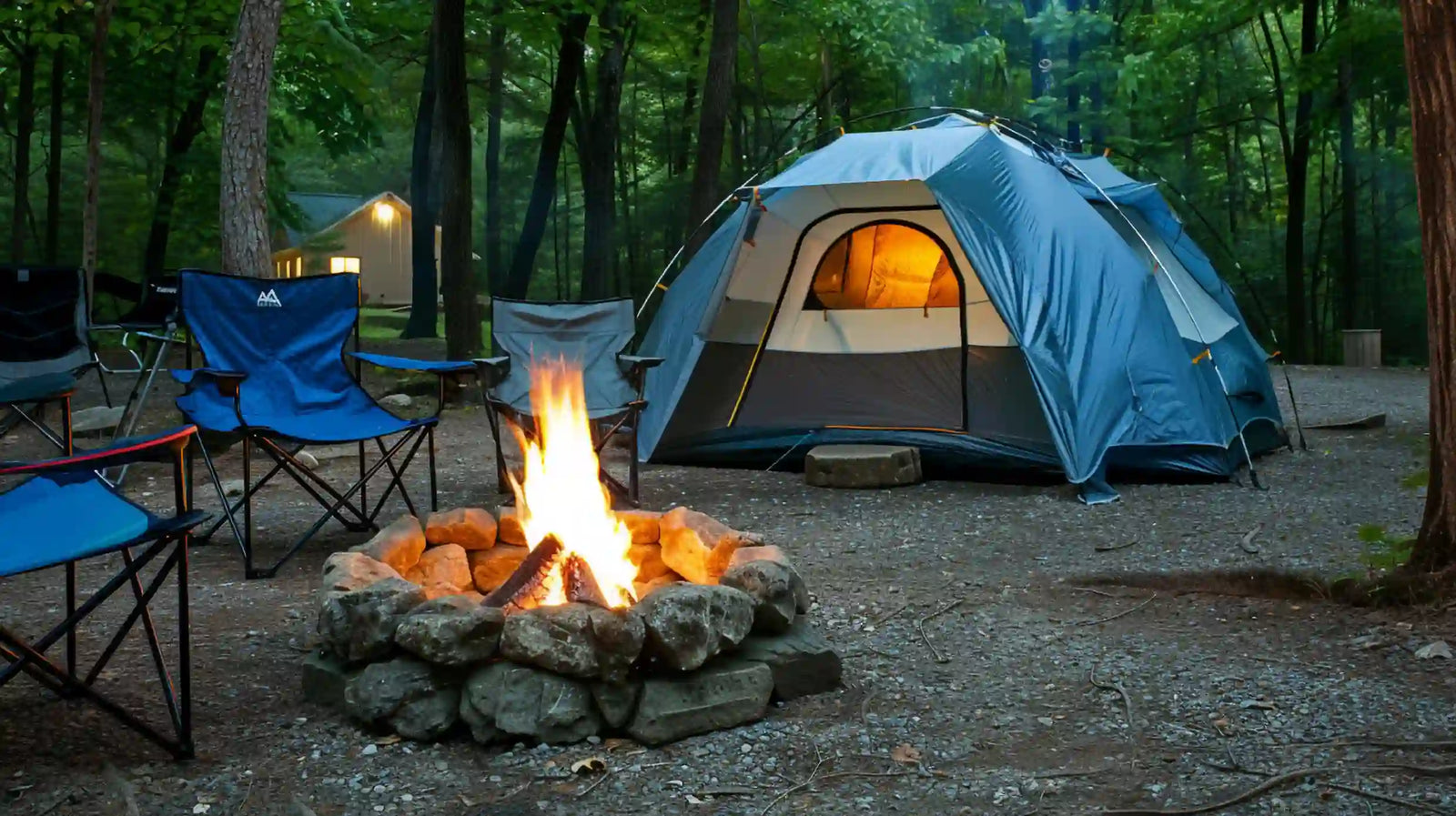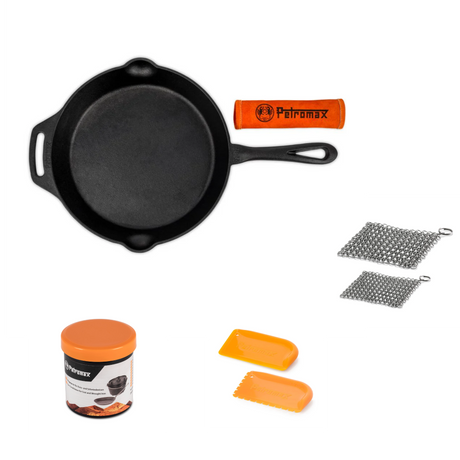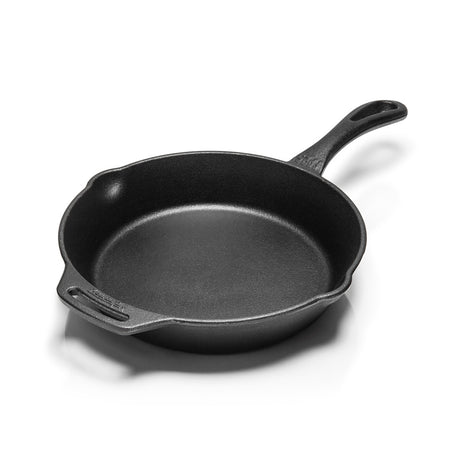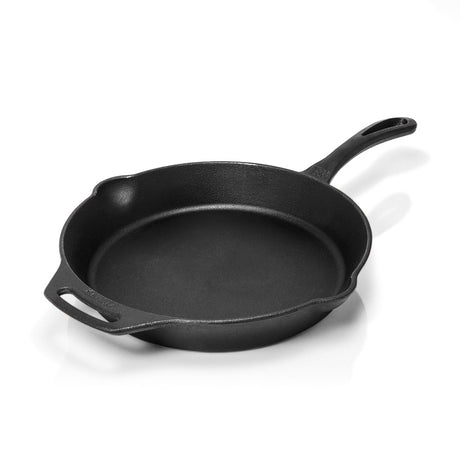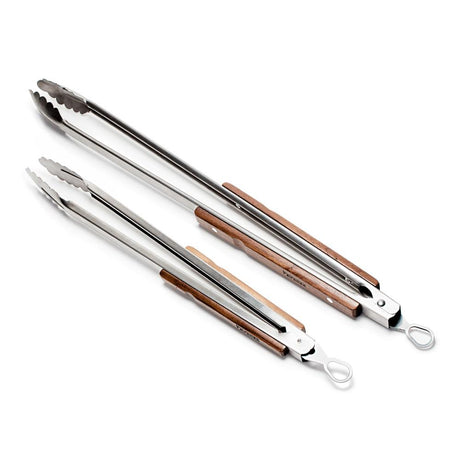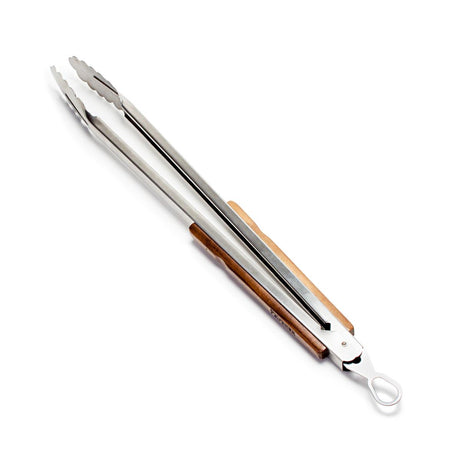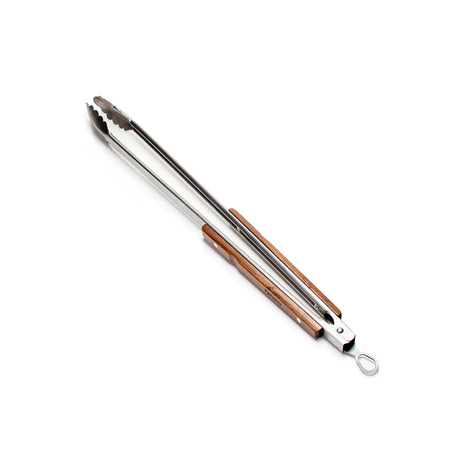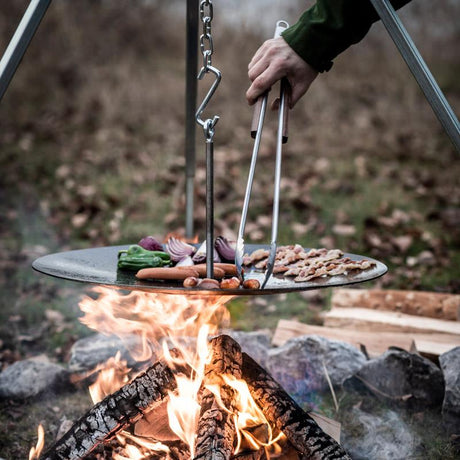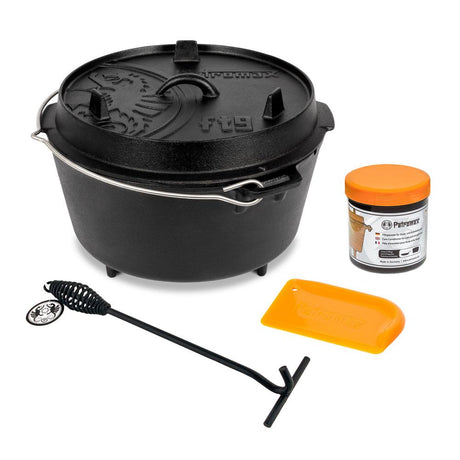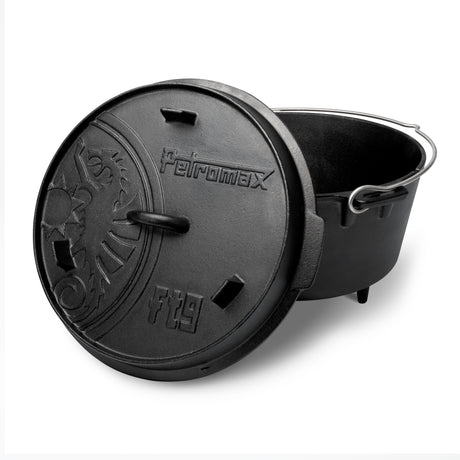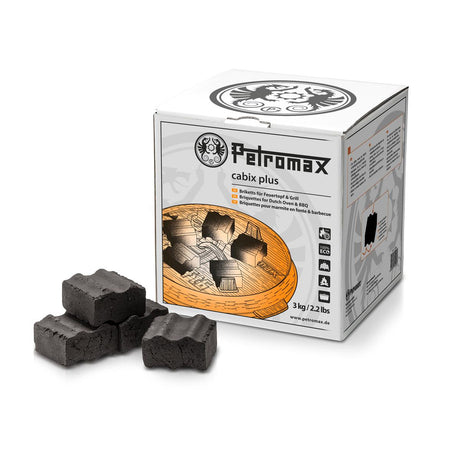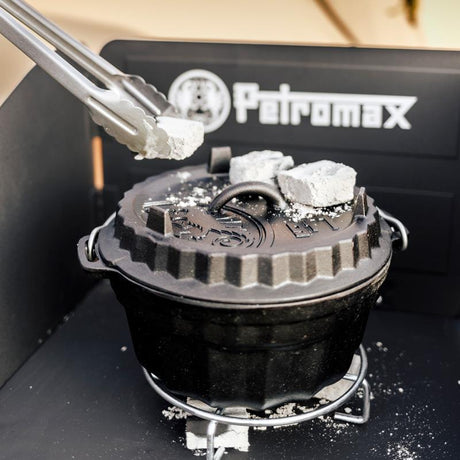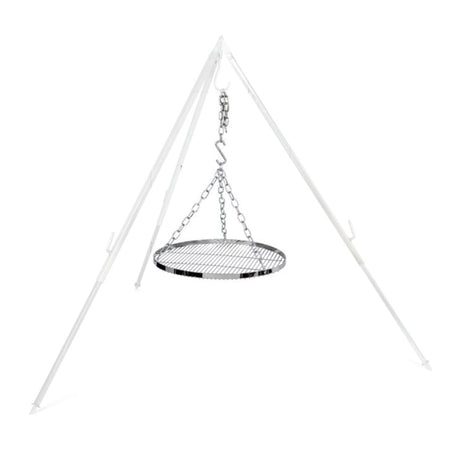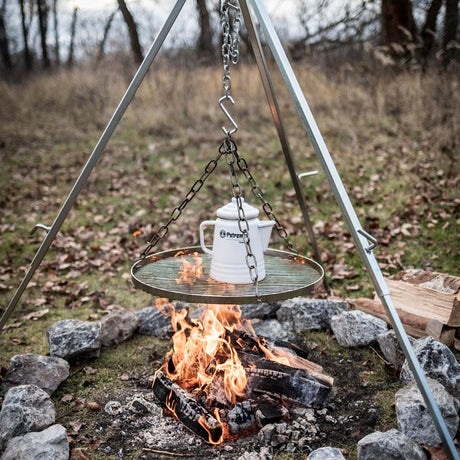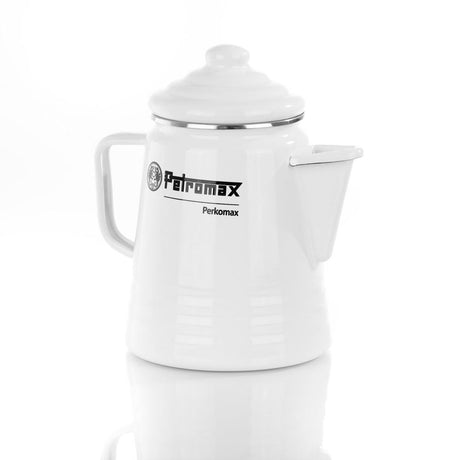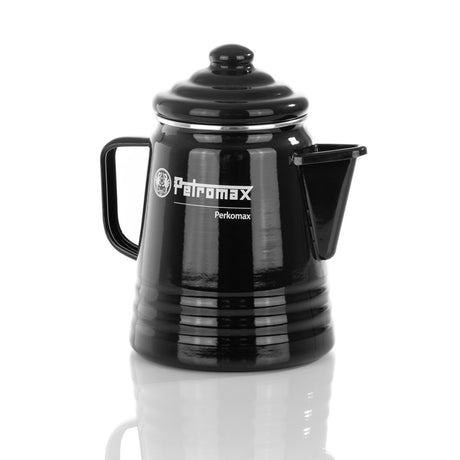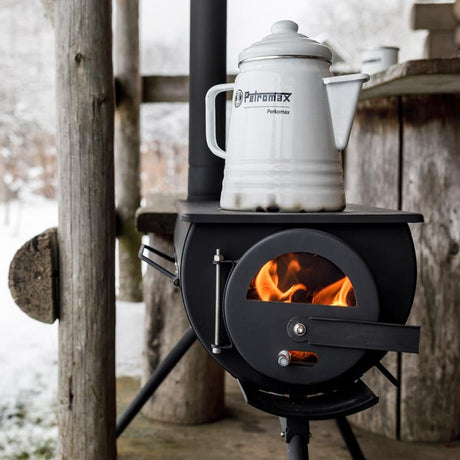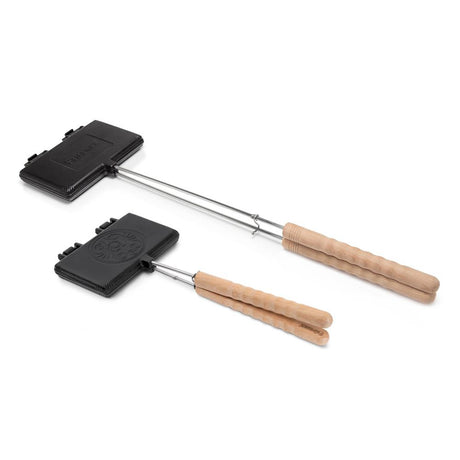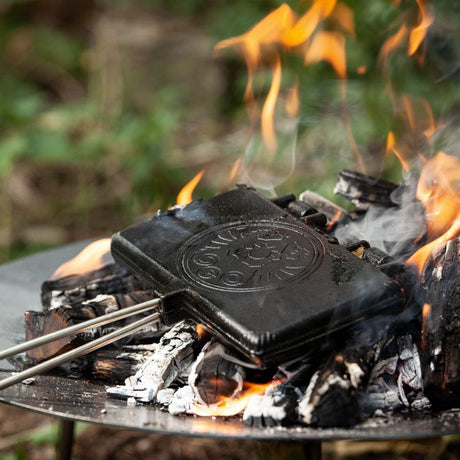La nature t'appelle, et avec la bonne tente, chaque aventure en plein air devient une expérience inoubliable. Mais le choix est vaste : des tentes de trekking ultralégères aux tentes familiales confortables, tu trouveras d'innombrables modèles aux caractéristiques les plus diverses. Il est donc difficile de faire son choix !
Dans ce guide, nous te prenons par la main et te montrons étape par étape ce qui est vraiment important lors de l'achat d'une tente. Nous t'expliquons ce que signifie la mystérieuse colonne d'eau, quel matériau est le mieux adapté à tes besoins et comment entretenir correctement ta tente pour qu'elle t'accompagne dans tes aventures pendant de nombreuses années.
Table des matières
Qu'est-ce qui fait une bonne tente et à quoi dois-je faire attention lors de l'achat d'une tente ?
Quels sont les différents types de tentes et laquelle est la bonne pour moi ?
Comment comprend-on la colonne d'eau et quels sont les revêtements qui rendent une tente étanche à l'eau ?
Comment se différencient les matériaux et qu'est-ce que cela signifie pour le choix de la tente ?
Quelle est l'importance d'une armature de qualité et de quels piquets ai-je besoin pour ma tente ?
Comment puis-je entretenir et réparer ma tente pour qu'elle dure longtemps ?
Combien coûte une bonne tente et vaut-il la peine d'investir dans des tentes de qualité ?
À quoi dois-je faire attention lorsque je campe dans différentes conditions météorologiques ?
Conclusion
Qu'est-ce qui fait une bonne tente et à quoi dois-je faire attention lors de l'achat d'une tente ?
Une bonne tente est ton fidèle compagnon dans la nature et t'offre une protection contre le vent, les intempéries et les regards indiscrets. Mais qu'est-ce qui fait vraiment une bonne tente ? Lors de l'achat d'une tente, tu dois faire attention à quelques facteurs décisifs qui peuvent décider de la joie ou de la peine lors de ton prochain voyage en camping.
Critères de qualité fondamentaux
La finition et les matériaux utilisés jouent un rôle central dans la fonctionnalité de ta tente. Fais particulièrement attention aux coutures propres et aux coins renforcés - ce sont souvent les premiers points faibles des tentes de mauvaise qualité. La longévité dépend en grande partie de la qualité des matériaux. Une tente doit en effet pouvoir résister à beaucoup de choses : Les rayons UV, la pluie, le vent et surtout le transport dans un sac à dos.
Fais particulièrement attention à
- Coutures propres: espacement régulier, pas d'extrémités de fils exposées
- Des zones renforcées: En particulier dans les coins et aux points de fixation
- Scellement des coutures: empêche l'eau de pénétrer dans les coutures.
- Fermetures à glissière: Robustes et dotées d'une couverture pour protéger de la pluie
Les tentes de mauvaise qualité présentent souvent des défauts de qualité après quelques utilisations seulement. Il vaut donc mieux investir dans un modèle bien fini qui ne te laissera pas tomber quand tu en auras le plus besoin.
La colonne d'eau, un critère d'achat décisif
La colonne d'eau est un facteur central pour la résistance aux intempéries de ta tente. Elle indique la pression d'eau que le matériau peut supporter avant de devenir perméable. (Tu en apprendras plus à ce sujet plus loin).
| Élément de construction | Colonne d'eau minimale recommandée | Optimal pour une utilisation intensive |
|---|---|---|
| Tente extérieure | 3.000 mm | 5.000 mm |
| Tapis de sol de la tente | 5.000 mm | 10.000 mm |
| Tente intérieure | 1.500 mm | 2.000 mm |
N'oublie pas qu'en cas de vent fort, la pluie exerce une pression plus importante sur la tente et que lorsque tu es couché ou à genoux, ton poids exerce une pression supplémentaire sur le tapis de sol. C'est pourquoi les valeurs plus élevées sont particulièrement recommandées pour les campeurs par mauvais temps.
Outre la colonne d'eau, l'armature joue également un rôle important. Elle détermine en grande partie la stabilité et la durée de vie de ta tente. La structure avec une tente intérieure et extérieure offre une protection optimale contre la condensation et assure un climat agréable.
Lors de l'achat d'une tente, tu dois aussi absolument comparer les matériaux utilisés. Le polyester, le nylon et le coton ont chacun leurs avantages et leurs inconvénients, qui ont plus ou moins d'importance selon l'utilisation prévue.
Choisir la bonne taille
La taille de ta tente devrait bien sûr être déterminée en fonction du nombre de personnes qui y passeront la nuit. Mais n'oublie pas que les indications des fabricants sont souvent assez optimistes. Si une tente est indiquée pour deux personnes, cela signifie généralement qu'elle peut accueillir deux personnes minces sans trop de bagages. Si tu prévois des séjours plus longs ou si tu voyages à plusieurs, tu devrais plutôt choisir une taille supérieure.
Règles générales pour l'espace nécessaire :
- Pour un camping confortable : Choisis une tente pour n+1 personnes (donc pour 2 personnes une tente pour 3 personnes).
- Minimum 60-70 cm de largeur par personne
- Au moins 10-15 cm plus long que la personne la plus grande
- Pour les séjours plus longs : Prévoir plus de place
La hauteur debout est souvent sous-estimée, mais elle est déterminante pour le confort de vie. En particulier lors de voyages de plusieurs jours ou par temps de pluie, tu apprécieras une hauteur suffisante. Pour les tentes familiales, la règle est la suivante : une hauteur d'au moins 180 cm dans la zone centrale est idéale.
Poids et dimensions de rangement
Pour les randonneurs et les trekkeurs, le poids est un facteur décisif. Cependant, un poids faible se fait souvent au détriment de la stabilité ou du confort. Il s'agit ici de trouver le bon compromis. La taille du sac doit être adaptée à ton moyen de transport. Si tu voyages en voiture, elle est moins importante que lors d'un trekking, où chaque centimètre dans le sac à dos compte.
| Utilisation prévue | Poids maximal recommandé | Compromis typique |
|---|---|---|
| Trekking/randonnée | 1,5-2,5 kg par personne | Moins de confort, plus petit encombrement |
| Voyages à vélo | 2,5-3,5 kg par personne | Paquet compact, confort moyen |
| Voyages en voiture | Peu important | Confort maximal plutôt que poids réduit |
Quels sont les différents types de tentes et laquelle est la plus adaptée à mes besoins ?
Le monde des tentes est très varié et il existe des modèles spécialisés pour chaque utilisation. Jetons un coup d'œil aux types de tentes les plus courants et découvrons quelle tente correspond à tes besoins.
Les types de tentes et leurs propriétés caractéristiques
Chaque type de tente a ses points forts et ses points faibles qui le prédestinent à certains domaines d'utilisation. La tente tunnel est un vrai classique et offre un excellent rapport poids/espace. Elle est relativement facile à monter et offre généralement un espace de rangement suffisant pour les bagages. Les tentes à coupole, quant à elles, convainquent par leur stabilité en cas de vent et sont faciles à monter, même pour les débutants. D'autres types comme les tentes pyramidales, les tentes faîtières ou les tentes géodésiques ont leurs propres points forts et points faibles.
Tente tunnel :
- Avantages : Excellent rapport espace intérieur/poids, bonne hauteur debout
- Inconvénients : la tente est trop petite : Nécessite un haubanage pour la stabilité, plus sensible au vent
- Idéal pour : camping en famille, longs séjours
Tente dôme :
- Avantages : Autonome, montage facile, bonne résistance au vent
- Inconvénients : Moins d'espace intérieur par rapport à la surface de base
- Idéal pour : Débutants, camping en festival, voyages courts
Tente géodésique :
- Avantages : Extrême stabilité même en cas de tempête, résiste à la neige
- Inconvénients : la tente n'est pas assez grande : Poids plus élevé, structure plus complexe, plus cher
- Idéal pour : haute montagne, expéditions, camping d'hiver
Tente pliante :
- Avantages : montage en quelques secondes, idéal pour les voyages spontanés
- Inconvénients : Moins stable, colonne d'eau souvent plus faible
- Idéal pour : Festivals, courts séjours par beau temps
La construction de ta tente détermine en grande partie la manière dont elle se comporte dans différentes conditions météorologiques. Les différences sont particulièrement évidentes par temps venteux.
Résistance au vent des différentes constructions de tentes
Les tentes tunnel offrent beaucoup de place, mais doivent être bien haubanées pour rester stables en cas de vent. Elles doivent être orientées avec le côté le plus étroit face au vent.
Grâce à leur structure en croix,les tentes à dôme tiennent également debout sans haubanage et offrent une bonne stabilité au vent. Toutefois, en cas de vent fort, elles doivent également être haubanées.
Les tentes géodésiques et semi-géodésiques constituent la catégorie reine de la stabilité au vent. Leur structure à armatures croisées multiples répartit la charge du vent de manière optimale et fait d'elles les tentes les plus stables qui soient - idéales pour les conditions météorologiques extrêmes.
L'auvent comme espace de vie supplémentaire
L'espace disponible varie fortement selon le modèle de tente. Des tentes compactes pour une personne aux tentes familiales spacieuses, tout est représenté. De nombreuses tentes proposent un auvent qui peut servir d'espace de rangement supplémentaire ou de lieu de cuisson protégé. C'est justement lors de séjours prolongés ou par mauvais temps qu'un auvent devient rapidement un luxe indispensable.
Avantages d'un auvent :
- Espace de cuisson protégé même en cas de pluie
- Espace de rangement pour l'équipement et les chaussures mouillés
- Espace de vie supplémentaire lors de séjours de plusieurs jours
- Zone tampon par rapport à la tente principale (moins d'humidité et de saleté).
Il existe différentes variantes d'auvents selon le modèle de tente :
| Type d'auvent | Caractéristiques | Utilisation typique |
|---|---|---|
| Auvent intégré | Partie intégrante de la tente | Tentes familiales, tentes tunnel |
| Auvent rapporté | Peut être ajouté ultérieurement, flexible | Tentes dômes, camping stationnaire |
| Tarp comme auvent | Ultraléger, minimaliste | Trekking, bushcraft |
Lors de séjours prolongés ou lorsque de nombreuses personnes utilisent la tente, un auvent spacieux vaut son pesant d'or. Il crée un espace de rangement supplémentaire et une zone protégée pour cuisiner et manger.
Conseils de montage et de démontage
Le montage et le démontage peuvent être plus ou moins complexes selon le type de tente. Veille à ce que la tente intérieure reste sèche en montant d'abord la tente extérieure en cas de pluie. Lors du démontage, tu devrais, si possible, attendre que la tente soit complètement sèche. Si tu dois quand même l'emballer alors qu'elle est mouillée, remonte-la dès que possible pour la faire sécher - sinon, tu risques de voir apparaître des moisissures.
Lorsque tu sors ta tente de son emballage, identifie d'abord tous les éléments et dispose-les de manière ordonnée. Cela te permettra de garder une vue d'ensemble et d'éviter le stress lors du montage ou du démontage, surtout s'il y a du vent ou de la pluie.
Comment comprendre la colonne d'eau et quels revêtements rendent une tente étanche ?
La colonne d'eau est sans doute l'une des valeurs les plus souvent citées lorsqu'il s'agit de tentes. Mais que signifie exactement ce terme mystérieux et de combien de colonne d'eau as-tu vraiment besoin ? Tu apprendras ici ce que signifie réellement cette valeur et comment les différents revêtements influencent l'étanchéité à l'eau.
La colonne d'eau : mesure professionnelle et importance pratique
La colonne d'eau est exprimée en millimètres (mm) et est déterminée par un test standardisé. Il s'agit de vérifier à quelle pression d'eau le matériau résiste avant que la première goutte ne le traverse.
Un exemple pour illustrer : une colonne d'eau de 5.000 mm signifie que le matériau résisterait à la pression d'une colonne d'eau de 5 mètres de haut avant de devenir perméable.
Officiellement, un matériau est considéré comme étanche à partir d'une colonne d'eau de 1.500 mm. Mais cela ne suffit pas pour une utilisation pratique en camping :
- Au moins 3.000 mm pour la tente extérieure dans des conditions normales
- Au moins 5.000 mm pour le sol de la tente
- 8.000-10.000 mm pour une utilisation intensive et des périodes de pluie prolongées.
Pourquoi des valeurs différentes sont-elles nécessaires ? Lorsque tu t'allonges ou t'agenouilles sur le sol de la tente, le poids de ton corps crée une pression supplémentaire qui augmente la colonne d'eau nécessaire. En cas de fortes pluies et de vent, l'eau est également poussée contre la tente avec une pression plus élevée.
Comparaison entre revêtement PU et siliconage
Les revêtements les plus courants pour les tentes étanches sont :
| Type de revêtement | Avantages | Inconvénients | Colonne d'eau typique |
|---|---|---|---|
| Revêtement PU | Moins cher, facile à réparer | Se fragilise avec le temps, sensible aux UV | 2.000-5.000 mm |
| Siliconé | Plus durable, plus grande résistance à la déchirure, meilleure résistance aux UV | Nettement plus cher, plus difficile à réparer | 3.000-8.000 mm |
| Double revêtement (Si/PU) | Combinaison des avantages des deux systèmes | Prix le plus élevé | 5.000-10.000+ mm |
Les tentes à revêtement PU sont la norme dans le segment de prix moyen. L'enduction rend le tissu étanche à l'eau, mais peut être endommagée avec le temps par les rayons UV et les contraintes mécaniques.
Les tentes siliconées (souvent appelées "Silnylon" ou "Silpoly") offrent une plus grande durabilité et une meilleure imperméabilité, mais sont également plus chères. Elles offrent également une meilleure résistance à la déchirure du matériau de base.
Des exigences différentes
Toutes les parties de ta tente n'ont pas besoin de la même colonne d'eau. La tente extérieure doit avoir au moins 3.000 mm, tandis que le tapis de sol de la tente doit avoir des valeurs nettement plus élevées, comme mentionné précédemment. En revanche, la tente intérieure ne doit pas nécessairement être étanche à l'eau - il s'agit ici plutôt d'une respirabilité pour éviter la formation de condensation.
Le tapis de sol de la tente :
- La colonne d'eau la plus élevée est nécessaire (5.000-10.000 mm).
- Humidité directe du sol et pression supplémentaire due au poids du corps
- Souvent revêtement supplémentaire ou construction à double couche
Tente extérieure :
- Colonne d'eau moyenne à élevée (3.000-5.000 mm)
- Doit protéger contre les précipitations directes
- Idéalement, revêtement résistant aux UV contre le vieillissement
Tente intérieure :
- Colonne d'eau plus faible suffisante (1.500-2.000 mm)
- Conçue principalement pour la respirabilité (souvent inserts en partie en mesh)
- Protection contre la condensation, pas contre la pluie directe
Les différentes exigences expliquent pourquoi les tentes haut de gamme utilisent souvent différents matériaux et revêtements pour les différents composants.
Entretien de l'étanchéité à l'eau
Avec le temps, l'imperméabilité à l'eau peut se dégrader. Une réimprégnation régulière permet de prolonger la durée de vie. Les coutures en particulier sont souvent des points faibles. Tu peux les rendre étanches à l'aide de joints spéciaux et ainsi augmenter considérablement la durée de vie de ta tente.
Quelles sont les différences entre les matériaux et qu'est-ce que cela signifie pour le choix de la tente ?
Le choix des matériaux a une influence décisive sur le poids, la durabilité et le confort de ta tente. Une compréhension plus approfondie des différentes propriétés des tissus t'aidera à trouver la tente optimale pour tes besoins. Jetons un coup d'œil aux matériaux les plus courants et à leurs propriétés.
Polyester, nylon et coton : propriétés centrales des matériaux
Comparaison des trois principaux tissus de tente :
| Propriété | Polyester | Nylon | Coton |
|---|---|---|---|
| Poids | Moyen | Léger | Lourd |
| Résistance aux UV | Bon | Modéré | Très bonne |
| Résistance à la déchirure | Moyenne | Élevée | Moyenne à élevée |
| Extensibilité | Faible | Élevé | Moyen |
| Absorption d'eau | Faible | Haute | Très élevé |
| Temps de séchage | Rapide | Moyen | Lent |
| Prix | Bon marché | Moyen | Cher |
Lepolyester est le tissu de tente le plus souvent utilisé dans le segment de prix moyen. Il convainc par sa faible absorption d'eau, sa bonne résistance aux UV et son temps de séchage rapide. De plus, il ne s'étire pratiquement pas lorsqu'il est mouillé, ce qui permet de maintenir la forme de la tente stable.
Le nylon (souvent sous forme de nylon ripstop) est plus léger et plus résistant à la déchirure que le polyester, mais il est aussi plus cher. Il absorbe davantage d'humidité et s'étire lorsqu'il est mouillé, ce qui nécessite un resserrage régulier. Sa moindre résistance aux UV est un inconvénient en cas d'utilisation prolongée.
Le coton est surtout utilisé pour les tentes traditionnelles et les modèles de glamping haut de gamme. Ce matériau naturel offre un climat intérieur agréable, mais il est nettement plus lourd et sèche plus lentement. En cas d'humidité, le tissu gonfle et assure ainsi naturellement l'étanchéité.
Un climat agréable dans une tente en coton : avantages et défis
Le coton est respirant et assure un climat agréable dans la tente. Cela se remarque particulièrement lorsque les températures sont élevées :
- Régulation naturelle de l'humidité
- Moins de formation de condensation
- Plus frais en été, plus chaud en hiver
- Réduction de "l'effet sac plastique" (transpiration dans la tente).
Ces avantages ont toutefois un prix :
- Poids nettement plus élevé (2 à 3 fois plus lourd que des tentes en plastique comparables)
- Longs temps de séchage en cas d'humidité
- Dimensions d'emballage plus élevées
- Plus sensible à la moisissure en cas de mauvais stockage
- Prix d'achat plus élevé
Les tentes en coton sont donc surtout adaptées au camping stationnaire, où le poids plus élevé n'a pas d'importance et où le confort est au premier plan.
Tissus résistants à la déchirure et aux intempéries pour une utilisation à long terme
La résistance à la déchirure et la longévité ne dépendent pas seulement du matériau lui-même, mais aussi du type de tissu :
Tissu ripstop :
- Fils de renfort à intervalles réguliers.
- Empêche la propagation d'une déchirure
- Reconnaissable à son motif à carreaux caractéristique
- Idéal pour une utilisation en plein air avec risque d'endommagement
Indication du denier (D) : La densité du tissu est souvent indiquée en deniers. Plus la valeur est élevée, plus le tissu est robuste, mais aussi lourd :
- 15-30D : Ultra-léger (tentes d'intérieur, tentes de trekking)
- 40-70D : standard (tentes de camping courantes)
- 150-210D : Robuste (tentes d'expédition, matériel de sol).
Tissu Oxford :
- Particulièrement utilisé pour les planchers de tentes.
- Très résistant à l'abrasion et stable
- Reconnaissable à sa structure granuleuse
- Données typiques : 150D, 210D Oxford Polyester
La combinaison du matériau, du type de tissu et du revêtement détermine de manière décisive la longévité de ta tente. Pour une utilisation intensive ou des expéditions, il vaut la peine d'investir dans des matériaux robustes de haute qualité.
Utilisation des matériaux en fonction de l'usage prévu
Pour les courts séjours et le trekking léger, les tentes en nylon ou en polyester sont idéales. Elles sont légères, compactes et offrent une protection suffisante pour quelques jours dans la nature.
Pour les expéditions plus longues ou les zones climatiques extrêmes, tu dois veiller à utiliser des matériaux particulièrement robustes ou des revêtements spéciaux. Dans ce cas, il vaut la peine d'investir dans des tissus de haute qualité avec une grande résistance à la déchirure et aux UV.
Voici encore une fois toutes les informations en fonction de l'utilisation et du climat en un coup d'œil :
Trekking et randonnées en montagne :
- Tissus légers en nylon ripstop (30-70D)
- Enduction de silicone pour une meilleure résistance à la déchirure
- Encombrement et poids réduits au minimum
- Exemple : nylon ripstop 30D avec double revêtement Si/PU
Camping en famille et séjours prolongés :
- Polyester robuste (68-75D)
- Bonne résistance aux UV pour une installation permanente
- Allongement plus faible pour une forme de tente stable
- Exemple : polyester 75D avec protection UV et revêtement PU
Expéditions et conditions extrêmes :
- Matériaux de haute qualité, extrêmement résistants à la déchirure
- Tissus de sol renforcés (150-210D)
- Valeurs de colonne d'eau les plus élevées
- Exemple : nylon ripstop 70D avec fond en polyester Oxford 210D
Climat chaud et humide :
- Matériaux respirants (coton ou mélange de polyester et de coton).
- Nombreuses ouvertures d'aération avec moustiquaires
- Protection contre les UV pour une exposition permanente aux rayons du soleil
- Exemple : tissu mixte en polycoton ou tente légère en coton
Quelle est l'importance d'une armature de qualité et de quels piquets ai-je besoin pour ma tente ?
L'armature est le squelette de ta tente et détermine en grande partie sa stabilité et sa durée de vie. Mais quel est le matériau le mieux adapté et quelle est l'importance des bons piquets ?
Aluminium vs. fibre de verre : des différences de matériaux aux conséquences pratiques
Comparaison des deux matériaux d'armature les plus courants :
| Propriété | Fibre de verre | Aluminium |
|---|---|---|
| Poids | Plus lourd | Plus léger (env. 30-40%) |
| Stabilité | Moyen | Très bonne |
| Flexibilité | Élevée, mais sujette à la rupture | Élastique et résistant à la charge |
| Comportement à la température | Fragile au froid | Insensible |
| Réparabilité | Difficile | Facile (manchons de réparation) |
| Prix | Bon marché | Plus cher |
| Domaines d'utilisation typiques | Tentes bon marché, camping occasionnel | Tentes de trekking, tentes d'expédition |
La fibre de verre est la norme pour les tentes d'entrée et de milieu de gamme. Ce matériau est comparativement bon marché, mais plus lourd et moins résistant. En cas de vent fort ou de charge de neige, il y a un risque de rupture, surtout par temps froid.
L'aluminium est le matériau haut de gamme pour les armatures de tente. Il est environ 30 à 40 % plus léger que la fibre de verre et plus stable. Les alliages (souvent 7001 ou 7075 aluminium) offrent un rapport poids/stabilité optimal. Autre avantage : les armatures en aluminium ne cassent pas complètement, mais se plient seulement dans les cas extrêmes et conservent leur intégrité structurelle.
Pour les activités de plein air ambitieuses et les conditions météorologiques exigeantes, les armatures en aluminium sont clairement recommandées - malgré leur prix plus élevé.
Arceaux
La disposition et la forme des arceaux déterminent en grande partie la stabilité de ta tente :
Structure croisée simple (tente en dôme) :
- Deux arceaux qui se croisent.
- Structure autoportante
- Stabilité de base
- Capacité de charge limitée en cas de vent et de neige
Structure en tunnel :
- Arceaux parallèles
- Non autoportante (nécessite un haubanage)
- Bon rapport espace/poids
- Stabilité au vent dépend de l'orientation
Structure géodésique :
- Arceaux multiples qui se croisent
- Répartition optimale de la charge
- Stabilité maximale dans des conditions extrêmes
- Coût de montage élevé, poids plus important
Pour choisir la bonne structure, tu dois prendre en compte les pires conditions météorologiques prévisibles. Les modèles géodésiques sont recommandés pour la haute montagne ou le camping d'hiver, tandis qu'une simple structure en croix ou en tunnel suffit pour les campings normaux.
Types de sardines
Les piquets sont souvent sous-estimés, mais ils sont essentiels pour assurer la stabilité de la tente. Le choix doit se faire en fonction de la nature du sol :
| Type de piquet | Optimal pour | Caractéristiques |
|---|---|---|
| Profilé en Y | Universel | Bon compromis entre poids et tenue |
| Profil en V | Sol solide | Stable, mais plus lourd |
| Piquets de sable | Sable, neige | Large pour une meilleure tenue dans un sol meuble |
| Piquets à clous | Sol dur | Mince et robuste pour les sols pierreux |
| Piquets en titane | Trekking ultraléger | Extrêmement léger, mais cher |
Une tente de qualité supérieure avec des piquets de moindre qualité perd considérablement en stabilité. Investis donc aussi dans de bons piquets, idéalement de différents types pour différentes conditions d'utilisation.
En règle générale, emporte plutôt plus de piquets que tu ne penses en avoir besoin et emporte différents types pour être prêt à affronter toutes les conditions de terrain.
Techniques de haubanage
Pour que ta tente soit correctement installée et reste stable même en cas de vent, un haubanage correct est indispensable. Utilise tous les points d'ancrage existants et veille à ce que les cordes d'ancrage forment un angle d'environ 45 degrés avec le sol.
Par temps venteux, tu devrais installer des cordes d'ancrage supplémentaires et orienter la tente le plus possible à l'opposé du vent. Cela augmente considérablement la stabilité et évite que ta tente ne se transforme en cerf-volant.
Comment entretenir et réparer ma tente pour qu'elle dure longtemps ?
Si tu entretiens correctement ta tente, tu pourras en profiter pendant de nombreuses années. En appliquant quelques astuces simples, tu prolongeras considérablement la durée de vie de ton fidèle compagnon.
Entretien de base
Nettoie régulièrement ta tente, mais avec ménagement. N'utilise jamais de produits de nettoyage agressifs ou de détergents, car ils peuvent endommager l'imprégnation. Au lieu de cela, nettoie ta tente avec de l'eau tiède et une éponge douce.
Enlève toujours la saleté le plus rapidement possible, surtout s'il s'agit d'excréments d'oiseaux, de résine d'arbre ou de substances agressives similaires. Celles-ci peuvent attaquer le tissu de la tente avec le temps.
Stockage
Une erreur fréquente est le mauvais stockage. Range toujours ta tente complètement au sec et dans un endroit frais et sombre. L'humidité entraîne la formation de moisissures et les rayons UV fragilisent le matériau.
Après une utilisation sous la pluie, tu dois absolument laisser sécher complètement ta tente avant de la ranger. Si cela n'est pas possible en cours de route, sors-la le plus rapidement possible à la maison et laisse-la sécher.
Techniques de réparation
Tu peux souvent réparer toi-même les petites déchirures ou les trous. Pour les déchirures dans le tissu de la tente, il existe des kits de réparation spéciaux avec des patchs autocollants. Pour les dommages plus importants, la couture peut être une meilleure solution. Utilise pour cela du fil spécial et solide et colmate ensuite la couture avec du mastic.
Les armatures cassées peuvent être fixées provisoirement avec des manchons de réparation. Celles-ci ne devraient manquer dans aucun kit d'urgence de tente. Pour une réparation durable, le remplacement du segment concerné est souvent la meilleure solution.
Maintenir l'imperméabilité
Avec le temps, l'imprégnation se dégrade et ta tente devient moins étanche. En la réimprégnant régulièrement, tu maintiendras la protection. Il existe des produits d'imprégnation spéciaux pour les tentes, que tu peux simplement vaporiser ou appliquer au pinceau.
Le traitement des coutures est particulièrement important. Avec un produit d'étanchéité pour les coutures, tu peux colmater de manière ciblée les endroits non étanches et ainsi rétablir l'étanchéité.
Combien coûte une bonne tente et vaut-il la peine d'investir dans des tentes de qualité ?
La fourchette de prix des tentes est énorme - des modèles bon marché à moins de 100 euros aux tentes d'expédition haut de gamme à plus de 1.000 euros. Mais qu'est-ce qui justifie ces différences de prix et vaut-il la peine d'investir dans une tente chère ?
Les catégories de prix et leurs caractéristiques typiques
Les différences de prix se reflètent dans la qualité, la durabilité et la fonctionnalité :
| Catégorie de prix | Caractéristiques typiques | Convient pour |
|---|---|---|
| Bon marché (30-100€) |
Armature en fibre de verre, revêtement PU simple, colonne d'eau 1.500-2.000mm | Campeurs occasionnels, festivals, peu d'utilisations par an |
| Classe moyenne (100-300€) |
Meilleurs matériaux, colonne d'eau plus élevée (3.000-5.000mm), armature en partie en aluminium. | Campeurs réguliers, trips plus longs, légers caprices de la météo |
| Haute qualité (300-600€) |
Matériaux de qualité, armature en aluminium, colonne d'eau de 4.000-8.000mm | Utilisateurs intensifs, conditions exigeantes, randonnées de plusieurs semaines |
| Premium (600€+) |
Matériaux de pointe, meilleure finition, extrêmement résistant aux intempéries, souvent ultraléger. | Expéditions, conditions extrêmes, utilisation professionnelle |
Les différences de prix s'expliquent par des matériaux de qualité supérieure, une meilleure finition et des constructions plus élaborées. Les tentes bon marché économisent souvent sur les coutures, les points d'ancrage et la colonne d'eau - des domaines qui ne se remarquent qu'après une utilisation intensive.
Calcul à long terme
Sur le long terme, une tente chère peut même être plus avantageuse. Alors que tu devras peut-être remplacer une tente bon marché tous les deux ans, un modèle haut de gamme peut tout à fait durer 10 ans ou plus - si tu l'entretiens correctement.
Exemple de calcul :
- Tente bon marché (60€) : Dure environ 2 à 3 saisons si elle est utilisée régulièrement.
- Tente haut de gamme (300€) : Dure 8 à 10 saisons pour une utilisation identique et un bon entretien.
Sur une période de 10 ans, tu devras remplacer la tente bon marché 3 à 5 fois (180-300€), alors que la tente haut de gamme pourrait encore rendre de bons services. A cela s'ajoutent un confort moindre et une frustration potentielle si la tente bon marché échoue en cas de mauvais temps.
Rapport qualité-prix
Tu trouveras souvent le meilleur rapport qualité-prix dans le segment de prix moyen. Tu y trouveras une qualité solide sans devoir payer pour des spécialisations extrêmes ou des suppléments de marque.
Pour les débutants et les campeurs occasionnels (100-150€) :
- Tentes dômes 3 saisons solides de marques outdoor établies.
- Compromis entre la durabilité et le prix d'achat
- Suffisante pour le camping normal en haute saison
Pour les campeurs ambitieux (200-350€) :
- Constructions de haute qualité avec armature en aluminium
- Bonne colonne d'eau (au moins 4.000mm)
- Détails bien pensés comme de multiples points d'ancrage et options de ventilation
Pour les utilisations spéciales (350-600€) :
- Tentes de trekking ultralégères (1-1,5kg) pour les randonneurs de longue distance
- Modèles extrêmement stables pour la haute montagne et le camping d'hiver
- Tentes de grande capacité avec un confort d'habitation bien pensé pour les campeurs de longue durée
Les meilleures opportunités d'achat se présentent souvent en fin de saison ou lors d'un changement de modèle - tu peux alors mettre la main sur des tentes de grande qualité avec une réduction significative.
Fais attention aux rapports de test indépendants et aux évaluations des utilisateurs - ils donnent souvent de précieuses indications sur le rapport qualité-prix réel.
À quoi dois-je faire attention lorsque je campe dans différentes conditions météorologiques ?
La météo peut avoir une influence considérable sur ton expérience de camping. Quelques astuces te permettront de faire face à des conditions défavorables et de rester au sec et à l'aise.
Conseils spécifiques aux conditions météorologiques
En cas de pluie, il est essentiel de choisir le bon emplacement. Évite les creux dans lesquels l'eau pourrait s'accumuler. Place ta tente légèrement en hauteur et creuse éventuellement de petites rigoles d'écoulement autour de la tente.
En cas de vent, place ta tente avec le côté le plus étroit contre le sens du vent et attache-la avec le plus grand soin. Utilise tous les points d'ancrage existants et utilise des piquets supplémentaires si nécessaire.
En cas de chaleur, une bonne orientation est utile : place l'entrée si possible à l'ombre ou vers le nord. Ouvre tous les volets d'aération et installe la tente si possible sous des arbres pour éviter le rayonnement direct du soleil.
Techniques de montage
En cas d'humidité, il est important de garder la tente intérieure au sec. Sur de nombreuses tentes modernes, tu peux d'abord monter la tente extérieure et ensuite accrocher la tente intérieure. Utilise cette possibilité lorsqu'il pleut !
Dans les régions orageuses, tu devrais particulièrement bien ancrer ta tente. Des cordes d'ancrage supplémentaires aux principaux points de charge de la tente augmentent considérablement la stabilité.
Optimisation du climat
Une bonne aération est décisive pour un climat agréable dans la tente. Par temps chaud, tu ouvres tous les volets d'aération, par temps froid, tu les fermes partiellement pour réduire les pertes de chaleur.
L'orientation de l'entrée a également une influence sur le climat intérieur. En été, elle doit se trouver si possible à l'ombre, en hiver, le rayonnement direct du soleil le matin peut être agréable.
Mesures d'urgence
En cas d'intempéries, tu devrais contrôler préventivement toutes les cordes de haubanage et les renforcer si nécessaire. Emballe l'équipement sensible de manière étanche et garde une lampe de poche à portée de main.
En cas d'orage, quitte la tente et cherche un abri sûr, car les piquets de tente en métal peuvent attirer la foudre. Si tu n'as pas la possibilité d'aller dehors dans la nature, évite au moins le contact avec les armatures.
Conclusion
Résumons encore une fois les aspects les plus importants de notre guide de la tente, afin que tu puisses commencer l'achat d'une tente en étant parfaitement équipé :
Les principaux critères de sélection
- La colonne d'eau est déterminante pour l'étanchéité - pour la tente extérieure, au moins 3.000 mm, pour le tapis de sol, mieux vaut 8.000 mm ou plus.
- Le matériau influence le poids, la durabilité et les propriétés climatiques - le polyester est bon marché et facile à entretenir, le nylon léger et résistant aux déchirures, le coton plus lourd mais avec un climat agréable.
- Le poids et les dimensions de rangement doivent être adaptés à ton moyen de transport - pour le trekking, chaque gramme est important, pour les vacances en voiture, moins.
- Une armature de qualité supérieure en aluminium offre une meilleure stabilité et une plus grande longévité que la fibre de verre, mais elle est plus chère.
Types de tentes et leurs domaines d'utilisation
- Tentes à coupole : montage facile, bonne résistance au vent, utilisation polyvalente.
- Tentes tunnel : bon espace, légères, mais un peu plus sensibles au vent.
- Tentes géodésiques : stabilité maximale pour des conditions extrêmes.
- Tentes familiales : Beaucoup d'espace, grand confort, mais plus lourdes et plus complexes à monter.
Conseils d'entretien pour une longue utilisation
- Nettoie ta tente uniquement à l'eau tiède, jamais avec de la lessive.
- Entrepose-la toujours complètement au sec et à l'abri des rayons UV.
- Rafraîchis régulièrement l'imprégnation, surtout au niveau des coutures.
Monte la tente et pars à l'aventure ! Consulte nos autres articles pour en savoir plus sur les meilleures tentes et d'autres conseils de camping pour ton prochain voyage en plein air :
Suspendre correctement un hamac : Comment réussir l'endroit parfait pour se détendre
Les plus grands mythes du camping passés au crible : qu'est-ce qui est vraiment vrai ?
Camping au bord d'un lac : nos tuyaux secrets en Allemagne
